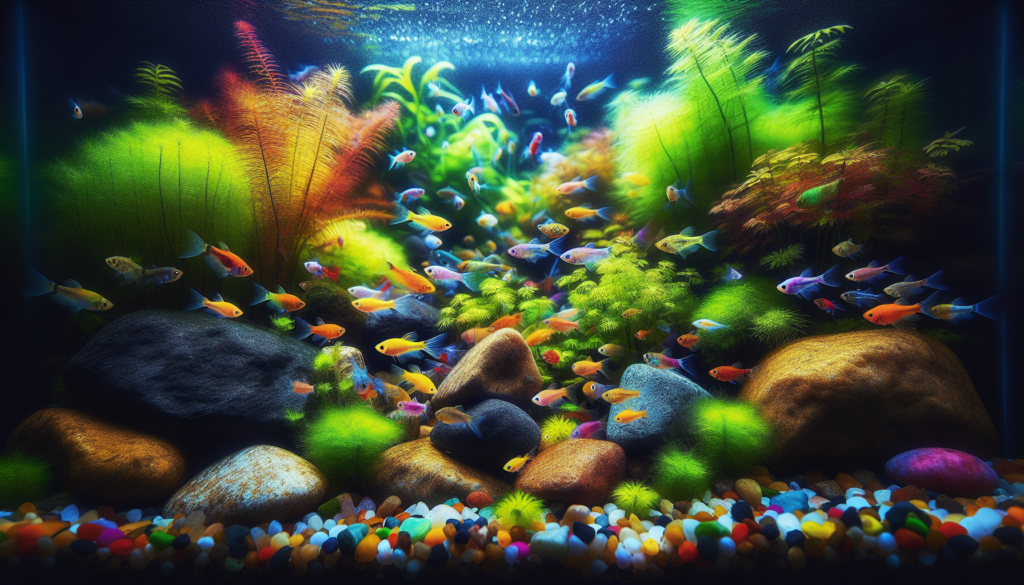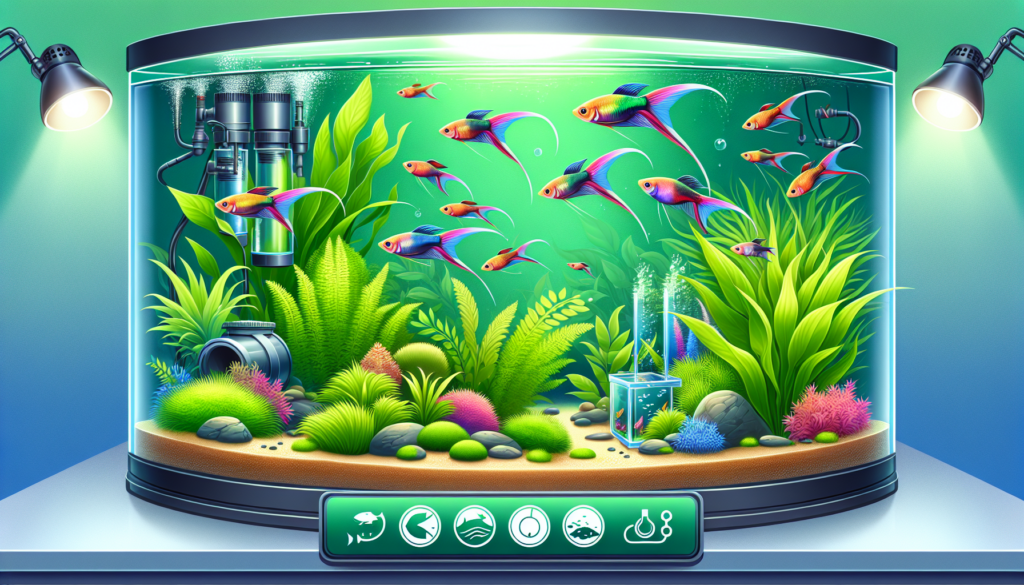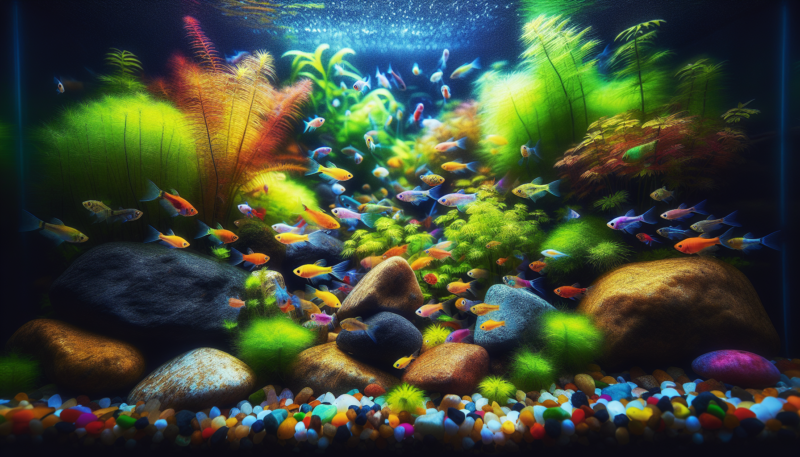Platies, those colorful and playful freshwater fish, have always been a popular choice for aquarium enthusiasts. But have you ever wondered about the lifespan of these delightful swimmers? We are here to unveil the secret behind how long platies live, shedding light on the factors that can make a difference in their longevity. Join us as we uncover the mysteries of these vibrant and lively aquatic creatures.
The Lifespan of Platies

What are Platies?
Platies are colorful and lively freshwater fish that belong to the Poeciliidae family. They are native to Central America and are popular among aquarium enthusiasts for their vibrant colors and peaceful nature. These small-sized fish are incredibly adaptable and can thrive in a variety of aquatic environments. Platies are known for their ability to breed easily, which has contributed to their popularity as tank pets.
Factors that Affect Lifespan
Several factors can influence the lifespan of platies, and understanding these factors can help you ensure optimal care for your pet fish. Here are some key factors that can affect the lifespan of platies:
1. Genetics:
Genetics play a significant role in determining the lifespan of platies. Some individuals may inherit genes that make them more prone to certain health issues or have a shorter lifespan compared to others. Breeding practices can also impact the genetics of platies, so it is essential to acquire fish from reputable breeders to ensure healthy genes are passed on.
2. Environmental Factors:
The environment in which platies live plays a crucial role in their longevity. Factors such as water quality, temperature, and pH levels can heavily impact their overall health and lifespan. Providing a well-maintained and properly balanced aquarium environment is essential to promote the well-being of platies and increase their lifespan.
3. Diet and Nutrition:
A balanced and nutritious diet is vital for the well-being and longevity of platies. Providing a variety of high-quality commercial fish food, supplemented with occasional live or frozen foods, can help meet their nutritional needs. Offering a diet rich in vitamins, minerals, and proteins will contribute to their overall health and increase their lifespan.
Average Lifespan of Platies
On average, platies have a lifespan ranging from 2 to 4 years. However, with excellent care and ideal living conditions, they can live up to 5 years or even longer in some cases. Providing the appropriate environment, feeding them a nutritious diet, and taking care of their overall well-being can significantly impact their lifespan.
Variations in Lifespan
While the average lifespan of platies falls within the 2 to 4-year range, it is important to note that there can be variations among individual fish. Factors such as genetics, diet, and overall care can influence these variations. Some platies may have a shorter lifespan due to genetic predisposition or health issues, while others may live longer if provided with optimal living conditions and appropriate care.

Differences in Lifespan between Genders
There is a notable difference in the lifespan of male and female platies. Female platies tend to have a slightly longer lifespan compared to their male counterparts. This difference in lifespan can be attributed to multiple factors, including the stress males experience during the breeding process. Males put a significant amount of energy into competing for female attention, which can affect their overall health and lifespan.
Influence of Genetics
As mentioned earlier, genetics play a crucial role in determining the lifespan of platies. Breeding practices can impact the overall health and genetic qualities of these fish. It is important to obtain platies from reputable breeders who prioritize the health and welfare of their fish. By selecting genetically robust individuals during the breeding process, breeders can help ensure longer lifespans for future generations of platies.
Environmental Factors
The environment provided for platies has a direct impact on their lifespan. It is crucial to maintain stable water conditions in the aquarium, including appropriate temperature, pH levels, and water hardness. Sudden or extreme changes in these factors can cause stress and negatively impact the overall health of the fish, potentially leading to a shorter lifespan. Regular monitoring of water parameters and timely adjustments, if necessary, will contribute to the longevity of platies.
Diet and Lifespan
The diet and nutrition of platies are essential for their overall health and lifespan. Providing a well-balanced diet that meets their nutritional requirements is crucial. High-quality commercial fish food specifically formulated for platies should form the basis of their diet. Supplementing their diet with live or frozen foods, such as brine shrimp or bloodworms, will provide additional nutrients and variety. Avoid overfeeding, as obesity can lead to various health issues and ultimately impact their lifespan negatively.
Water Quality and Lifespan
Maintaining optimal water quality is of utmost importance for platies’ long and healthy lives. Regular water changes, proper filtration, and monitoring of key water parameters, such as ammonia, nitrite, and nitrate levels, are essential. Elevated levels of these harmful substances can lead to stress and various health problems for platies, ultimately shortening their lifespan. Keeping the water clean and toxin-free will significantly contribute to the well-being and longevity of these colorful fish.
Signs of Aging and Potential Health Issues
As platies age, they may exhibit certain signs indicating the progression of time. These signs can include a faded coloration, decreased activity levels, and a loss of appetite. While some changes are a natural part of the aging process, it is essential to monitor for any abnormal behavior or symptoms that may indicate an underlying health issue.
Common health issues that can affect platies include fungal or bacterial infections, parasites, swim bladder disorders, and fin rot. Regular observation and promptly addressing any signs of illness or distress will help ensure early intervention and increase the chances of a full recovery. Consulting with a qualified veterinarian or experienced aquarist can provide valuable guidance in addressing health concerns and maximizing the lifespan of platies.
In conclusion, understanding the factors that influence the lifespan of platies is essential for providing them with optimal care and ensuring their well-being. By considering genetics, environmental factors, diet, and water quality, you can help extend the lifespan of these beautiful and captivating fish. With proper care and attention, your platies can live a long and fulfilling life, bringing joy and vibrancy to your aquarium for years to come.
